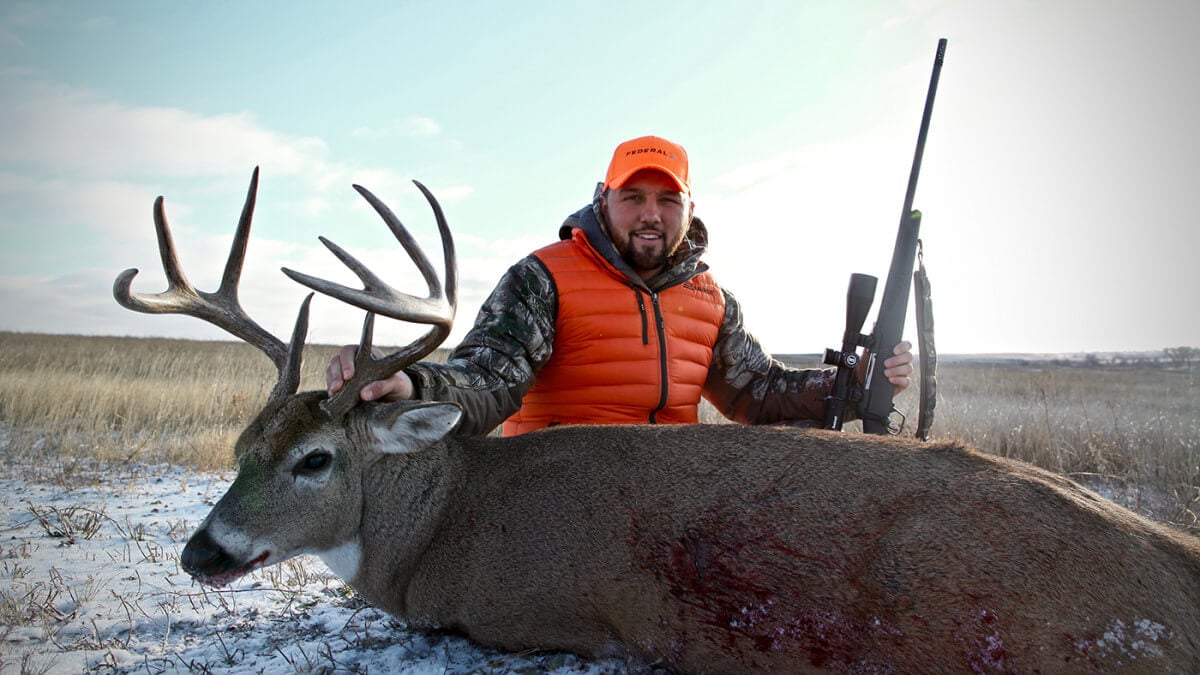- Savage Blog
- Mike Stroff's Whitetail Deer Hunting Tips
Mike Stroff's Whitetail Deer Hunting Tips

There are three critical components to successful late season whitetail deer hunting -- know the food, play the wind, and strategic calling. Savage ambassador and host of "Savage Outdoors" and the "The One", Mike Stroff has expert tips to help you master these skills.
Follow the Food
Many hunters focus on the rut as the time to hunt for big whitetail bucks, but late season is a great time kill a big mature buck. Run down from the rigors of the rut, late season whitetail bucks are going to follow their gut...to the food. During the rut, they were chasing does, running hard and now they're a little worn out -- no doubt about that. As it gets colder in the late season, their main focus is going to be bulking up before winter. If you can figure out where their favorite late season food sources are and how they get there from bedding areas, you might be able to harvest a big buck at the end of the season.
Scent Control Secrets
As with any big game, playing the wind and minimizing your scent is critical when you're whitetail deer hunting. "If the wind's wrong, you've got a problem," says Stroff. Watching the wind is one of the first lessons new deer hunters learn -- you want the wind in your face, so it doesn't carry your scent downwind and alert the deer to your presence. But we all know that the wind doesn't always cooperate with our goals for the day, which is why it's important to do everything you can to minimize your human odor. The most obvious first step? Wash your clothes and gear in a scent-free soap. When you get to the field, spray down to reduce your scent further and you can even use cover scents in the field. Minimizing your scent just might give you an extra moment or two that opens an opportunity to shoot a deer, even if they do get a whiff of you.
Rattling Rutting Whitetails
Many inexperienced hunters make the mistake of rattling too much and end up getting busted by the big buck they're chasing. Stroff has two tips to make the most of rattling for bucks. First, once that buck is interested and responds to your calls -- stop! The buck knows exactly where the rattle came from and you don't want him to fixate on your location. He'll take off before you have an opportunity to shoot.

Second, be prepared for him to move downwind to investigate with his nose first. This is especially true for mature bucks. You still need to play the wind, watch your approaches and keep the wind in your face to stay upwind, but a mature buck responding to your rattles will almost always circle around you and come in from downwind. Be ready for him to appear downwind, turn around and make sure you're set up for a good shot before you get busted.

